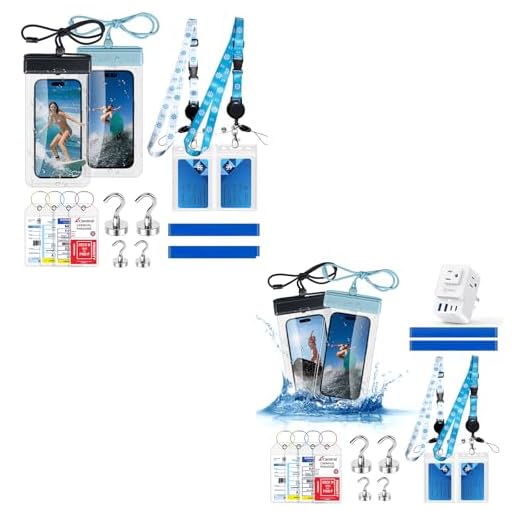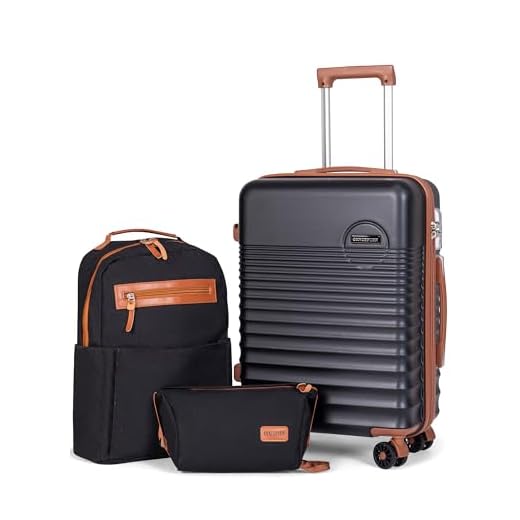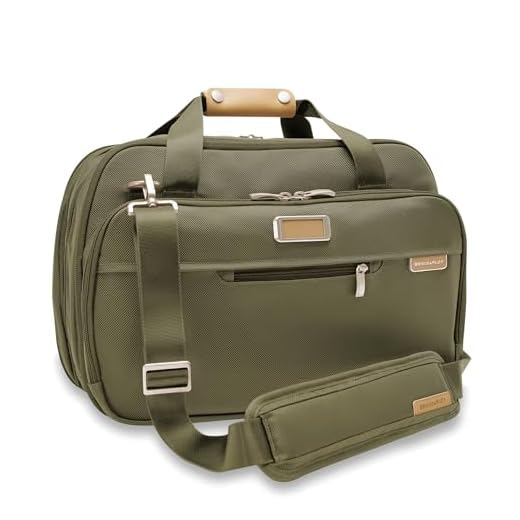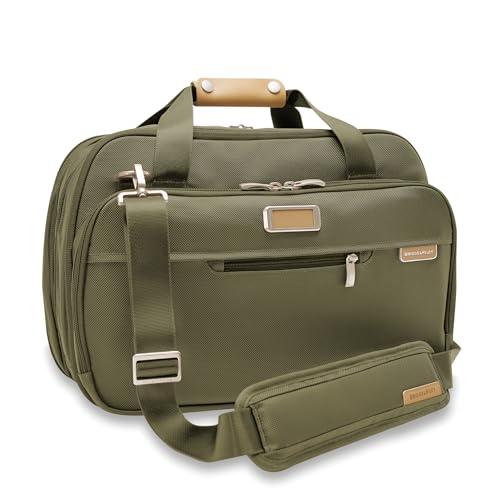







Pack no more than two large suitcases and one cabin bag per person; airlines that transport passengers to the port enforce official weight and size rules–commonly 23 kg / 50 lb and 158 cm / 62 in–and those carriers charge for overweight or oversized items. Heavy trunks complicate transfers at tendered ports and often require additional manpower or fees.
Most ship operators will transport checked pieces to staterooms without a separate onboard fee, yet port staff may refuse extremely heavy or oversized items. Choose soft-sided cases for easier stowage in cabin closets, and keep fragile or essential items in your carry-on since some ports restrict large-case movement during transfers.
Declare prescription medications and keep valuables with you. Prohibited or restricted items typically include compressed gas, flammable liquids, firearms, large lithium batteries and self-balancing scooters; consult the operator’s prohibited list before packing. For international departures, confirm customs rules for alcohol and duty-free allowances.
Final checklist: tag each piece with name and cabin number, photograph contents and condition, weigh and measure bags at home to avoid surprises, and verify both the ship operator’s baggage policy and your airline’s rules at least 72 hours prior to departure.
On-board baggage allowance and rules
Recommendation: pack no more than two checked pieces per guest; each piece should not exceed 23 kg (50 lb) and 62 linear inches / 158 cm. Carry-on policy: one small roll‑aboard plus one personal item; liquids must comply with standard port security containers (100 ml per bottle inside a clear resealable bag).
- Pier drop-off: present checked bags at the terminal luggage desk at least 90 minutes before the scheduled boarding window; late drop-offs may be declined.
- Overweight/oversize handling: items over 23 kg (50 lb) or exceeding 158 cm linear may be assessed handling fees or refused by terminal agents.
- Sports and oversized gear (bikes, surfboards, golf clubs): book in advance; fees and storage rules differ from standard pieces and some items may be prohibited on certain sailings.
- Prohibited contents: flammable liquids, fireworks, firearms, fuel for power tools, and illicit substances are banned in both checked and carry items.
- Medical devices and batteries: notify the operator ahead of time for portable oxygen concentrators and mobility aids; battery type (wet, gel, lithium) determines carriage and labeling requirements.
- Valuables and prescriptions: retain jewelry, cash, passports, and medications in carry-on; the terminal/ship is not liable for high-value items placed in checked storage.
- Tagging and documentation: attach printed tags with full name, contact info and destination; photograph bag contents and serial numbers for insurance claims.
- Customs and alcohol rules: allowances and declaration requirements vary by embarkation/disembarkation ports–declare items as required to avoid fines.
Confirm final baggage rules and any surcharges with the line operator and your travel agent at least seven days before departure; terminal staff enforce the policy at check-in. For unrelated equipment-security guidance see are dlink cameras secure.
Checked baggage: weight, piece allowances and airline transfer rules
Confirm checked-bag allowance with the operating carrier and purchase additional allowance online before airport check-in to reduce fees.
Two booking systems govern checked items: weight-based (kilograms/pounds per piece) and piece-based (number of pieces). Typical weight rules: economy – 23 kg (50 lb) per piece; premium/business – 32 kg (70 lb) per piece. Typical piece rules: many international fares permit 1–2 pieces; U.S. domestic carriers commonly charge per piece (first/second bag fees apply).
Standard maximum linear size for checked cases is 158 cm / 62 in (length + width + height). Any bag exceeding that dimension is classed oversize and will trigger an oversize fee or may be refused carriage. Carriers generally prohibit single-item weights above 32 kg (70 lb) for safety; redistribution or repacking will be required at check-in if a piece is heavier.
Overweight/oversize fee ranges (estimate): domestic routes $75–200 per bag; international routes $100–400 per bag depending on carrier and route. Fees vary by airport and may be charged per segment, so a through-checked bag on multiple carriers can incur multiple fees if not covered by fare class or baggage agreement.
For interline transfers: when all flights are on a single ticket, checked items are usually through-checked to the final ticketed destination and re-tagged at initial check-in. When flights are on separate tickets, expect to reclaim bags at transfer airports, re-check them with the next carrier and pay any applicable fees. Always verify tag destinations at counter and keep boarding passes for each leg.
When transferring from air to a ship/operator transfer: do not assume automatic transfer of checked cases. Most carriers will not through-check to a vessel; passengers must collect bags at baggage claim and deliver them to the transfer desk or porter. If a through-check to a terminal exists, confirm in writing and inspect the bag tag for the terminal name/code before leaving the counter.
Practical packing and documentation tips: keep passports, boarding passes, reservation confirmations, medications and one change of clothes in carry-on; photograph checked-bag tags and the exterior of each case; attach a durable external name/phone label and place a copy of contact details inside the bag; use TSA-approved locks; place valuables and fragile items in the cabin bag.
If a checked piece is delayed or mishandled, file a Property Irregularity Report (PIR) with the airline at the airport, keep the PIR number, and submit receipts for emergency purchases to request reimbursement. For coordinated ground-to-ship transfers booked through a tour operator or port agent, also notify that operator immediately and follow their claim procedure in parallel with the airline report.
Carry-on size, liquids and items allowed during boarding
Bring one soft-sided carry-on no larger than 22 x 14 x 9 inches (56 x 36 x 23 cm); keep passports, travel documents, cash, prescription medicines and one change of clothes inside.
- Dimensions & weight: 22 x 14 x 9 in (56 x 36 x 23 cm) is the practical maximum for a single cabin carry-on accepted by most ship operators and airlines; a small personal item (purse, laptop bag) may be allowed in addition.
- Liquids (airport security rules apply): Containers no larger than 3.4 oz / 100 ml placed in a single 1‑quart (≈1 litre) clear resealable bag, one bag per passenger. Prescription medications, baby formula and medically necessary liquids are exempt but keep them accessible and in original packaging.
- Alcohol: Many operators permit one unopened bottle of wine or champagne per adult at boarding; staff typically collect it at check-in and deliver to the cabin later or hold it until disembarkation. Do not pack open bottles in carry-on; follow airline rules for alcohol on flights to port.
- Batteries & electronics: Portable power banks and spare lithium batteries must be carried in the cabin bag only; terminals taped or in original packaging. Typical airline guidance: ≤100 Wh allowed without approval, 100–160 Wh require airline approval, >160 Wh prohibited.
- Prohibited at check-in/boarding:
- Firearms, ammunition, knives with blades over short pocket size, pepper spray, fireworks and explosives
- Compressed gas cylinders, flammable liquids, paints, fuel containers
- Hoverboards and similar devices with non-removable lithium batteries
- Illegal drugs and controlled substances
- Items that require declaration or prior approval: Medical oxygen, certain mobility aids, spare medical batteries, and commercial quantities of food or alcohol. Keep prescriptions and doctor’s letters accessible for inspection.
- Food and agricultural items: Fresh fruits, vegetables, meats and unpasteurized dairy are often banned at port destinations; sealed commercial food jars usually pass but may be inspected and confiscated.
Quick boarding checklist: passport/ID, boarding pass, prescriptions (original bottles), small clear bag with travel-size toiletries, phone, chargers, power bank (in cabin bag), one clean outfit, valuables and jewelry.
Extra, oversized or sports gear: fees and advance arrangements
Reserve oversized or sports-equipment handling at least 30 days before sailing; typical handling fees range $50–$250 per item (bicycles $75–$150, golf bags $50–100, surfboards/paddleboards $100–300), with special-case charges up to $500 for very large crates.
What triggers special handling and sample fees
Items exceeding 62 linear inches (length + width + height) or weighing over 50 lb are treated as oversized by most onboard operators; single pieces above ~150 lb often require freight shipment and may be refused. Standard examples: bicycle – $75–$150, set of golf clubs – $50–100, kayak or canoe – $150–300, surfboard/paddleboard – $100–300, musical instruments (large) – $75–200. Fragile-item handling surcharges commonly add $20–$75.
Packing, batteries, documentation and advance notice
Send exact dimensions, weight and photos to the ship’s special-equipment desk when booking; request written confirmation listing fee and drop-off location. Pack in a rigid case or crate with interior padding; label externally with name, cabin number and phone. Remove all fuel, aerosols, compressed gas and loose propane. For electric bikes, scooters or boards: remove battery and carry it in hand baggage if airline transfer applies – spare lithium cells over 100 Wh require airline approval and may be prohibited. Disassembled items should be banded and wrapped; loose paddles, oars or poles must be bundled.
If air transfer precedes boarding, check airline oversized and sports-item rules separately: fees and allowed battery policies differ from ship-side rules. For shore excursions and day use, pick a theft-resistant pack such as the best travel backpack for europe anti theft and a compact rain solution like the best umbrella brand in bangladesh.
Book special-equipment handling early, pay any quoted prepayment to lock the slot, purchase transit or trip insurance covering damage or loss, and arrive at the designated drop-off point at the scheduled time. Refused items on boarding day often incur return-shipping charges or disposal fees billed to the guest.
Prohibited items and items that require prior approval
Declare all hazardous, medical and battery-powered items at least 30 days before boarding; unapproved items may be refused boarding, confiscated, or require off-ship shipping at the guest’s expense.
Strictly prohibited
Explosives and fireworks; all types of flammable liquids and fuels (gasoline, lighter fluid, camping fuel); pressurized cylinders containing combustible or toxic gases (propane, butane, oxygen cylinders not approved in advance); industrial chemicals and corrosives; riot-control agents (pepper spray, tear gas) when carried for self-defence; illegal drugs and illicit substances; hoverboards and self-balancing skateboards with noncompliant batteries; gasoline- or diesel-powered engines or tanks with residual fuel. Firearms and ammunition are not permitted onboard unless routed through proper airline/port procedures and documented with advance coordination – unauthorized firearms will be seized and may trigger legal action.
Items that require advance approval and documentation
Battery-powered devices: lithium-ion batteries up to 100 Wh permitted only in carry-on; batteries 100–160 Wh require written approval from the operator and airline prior to travel; batteries over 160 Wh are prohibited. Lithium metal (non-rechargeable) cells with lithium content greater than 2 g are forbidden. Power banks and spare batteries must be carried in the passenger cabin with terminals insulated (tape or original packaging).
Mobility aids and electric wheelchairs: submit battery type (sealed lead‑acid vs lithium), watt-hour rating, total weight and dimensions, and photos 30–60 days before sailing. Non-removable lithium batteries often require removal, special stowage or advance denial if specifications exceed thresholds.
Medical oxygen and respiratory devices: provide a physician’s statement, device model, flow rate and battery run-time at least 30 days prior. Portable oxygen concentrators may be permitted with signed approval and verified battery capacity to cover delays.
Compressed-gas cylinders and scuba tanks: tanks must be emptied, valve-protected, visually inspected and tagged within accepted service intervals; submit inspection/service documentation before travel. CO2 cartridges for inflators and certain paintball cylinders require prior authorization or are banned.
Sporting weapons (bows, spearguns, crossbows): declare and obtain written permission if carriage or stowage is permitted; carriers will require specific packing and may prohibit some items entirely. Drones, gas-powered models and large e-bikes usually need written approval and may be restricted by port or local law.
Documentation and processing: send physician letters, battery spec sheets (Wh rating), cylinder inspection tags, and photos to the operator’s special assistance or security team within the specified timeframe. Label items clearly, tape battery terminals, and pack fuel tanks purged and dry if transportation is allowed. Failure to provide required paperwork will result in denial of carriage or confiscation and possible fines.
Declare, track and report lost or delayed baggage on board
Report missing or delayed baggage at the Guest Services desk immediately after discovery and request a Property Irregularity Report (PIR) or ship-issued claim number for tracking.
Provide this information when filing a report: full name exactly as on booking, stateroom number, reservation/booking reference, mobile phone and email, port of boarding and intended destination, airline flight numbers if transfer occurred, baggage tag numbers (from check-in), clear description (brand, color, size, distinguishing marks), approximate contents and estimated value, serial numbers for electronics, and time/place last seen. Attach photos of the item and the bag tag if available.
Onboard procedure: Guest Services logs the PIR and records the claim number; staff will place an alert in the ship’s lost-and-found system and notify terminal handlers at the next port. Ask the desk for an expected follow-up time, the name/extension of the staff member handling the claim, and whether delivery to the stateroom is possible if the item turns up later.
Tracking options: use the PIR or tag number in the airline’s baggage tracing portal (many carriers use IATA WorldTracer); check the ship’s onboard claim-tracking page or the terminal baggage office at the next port; save email notifications and take screenshots of status pages. If bags transferred via airline to a connecting flight, track through the airline system using the original tag number and PIR.
Receipts and interim expenses: keep original receipts for emergency purchases (toiletries, basic clothing). Submit copies of receipts together with the PIR, boarding pass, and bag-tag images to the carrier’s claims department after disembarkation for reimbursement review. Note typical carrier reporting windows: many require damaged-item reports within 7 days and delayed-baggage claims opened within 21 days from delivery date for maximum recovery eligibility.
On delivery or recovery: inspect contents in front of the delivery agent or at the terminal; sign a delivery receipt and note any missing or damaged items explicitly on that document. Retain all paperwork–PIR copy, delivery receipt, boarding passes, bag tags, photos–until final claim settlement.
| Action | Where | Information to provide | Typical timeframe / outcome |
|---|---|---|---|
| Declare missing or delayed bag | Guest Services desk on board | Passenger name, stateroom, booking ref, tag numbers, description, photos | PIR/claim number issued same day; ship logs claim |
| Track status | Airline baggage tracing portal or ship’s tracking page | PIR or airline tag number, last-seen location | Online status updates; email alerts if registered |
| Report damage | Claims office after disembarkation (carrier) | PIR copy, photos, receipts for repairs/replacements | Many carriers require report within 7 days |
| Submit receipts for essentials | Carrier claims department | Original receipts, PIR, boarding pass, bag-tag image | Reimbursement subject to carrier policy; follow-up via claim number |
| Follow up on unresolved claims | Email or phone to carrier claims using PIR | PIR number, reference emails, photos, receipts | Request written status updates; escalate to travel agent or travel insurer if needed |
Keep all physical tags, boarding passes and the PIR until claim closure; if purchasing travel insurance, forward claim documents to the insurer as soon as carrier paperwork is complete.
Bringing mobility aids, medical equipment and specialty items
Notify the ship operator and onboard medical office at least 60 days before departure and submit a physician’s letter plus an equipment specification sheet that includes battery chemistry, voltage, amp‑hours or watt‑hours, dimensions, weight and serial numbers.
Battery specifics and documentation
Carry the manufacturer’s battery label or spec sheet showing Wh (watt‑hours) or V and Ah so Wh can be calculated (Wh = V × Ah). Common acceptable benchmarks: lithium‑ion ≤100 Wh typically passes airline screening without prior approval; 100–160 Wh requires carrier permission; >160 Wh is usually restricted for passenger transport – notify the ship operator if packs exceed 160 Wh. Flooded (wet) lead‑acid batteries are commonly prohibited aboard; sealed AGM or gel batteries may be allowed with prior written approval and proper terminal protection. Tape exposed terminals, disconnect batteries if possible and place a durable warning tag with owner name and cabin number.
Onboard handling, oxygen, CPAP and sharps
Declare portable oxygen therapy, portable oxygen concentrators (POCs) or home oxygen to medical staff before sailing and supply the POC manufacturer’s approval letter with flow‑rate capability and battery runtime. Many operators permit FAA‑ or IEC‑approved POCs with documented spare battery capacity; continuous oxygen cylinders are often restricted or must be arranged through an approved vendor. For CPAP users, bring the machine, power adapter compatible with both 110V and 220V (and a ground‑fault plug if required), and a travel‑length power cable; remove humidifier water during screening and store distilled water in labeled containers if humidification will be used onboard. Store sharps in a rigid, leakproof, labeled container and turn them in to the ship medical office for safe disposal rather than leaving in cabins.
Pack a small repair kit (Allen keys, tire pump, spare tire tubes or patch kit, cable ties, spare fuses), two ways to contact your equipment supplier, proof of ownership and insurance documentation, and clearly mark equipment with name and cabin number. Arrive at the terminal early for gangway assistance; security or terminal staff may require batteries to be removed for screening and may direct where powered equipment is stowed during the transfer to the vessel.







